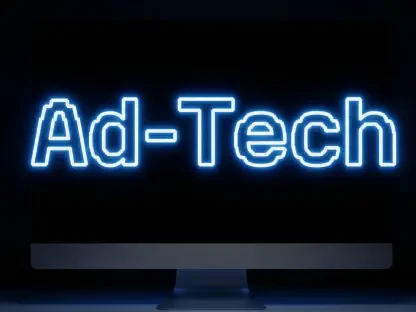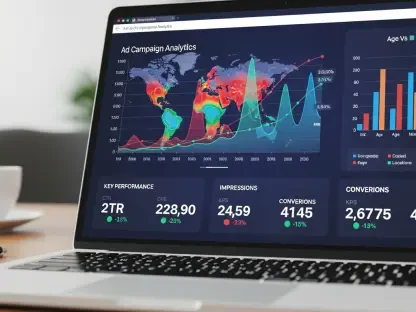The Evolving SEO Landscape
Imagine a digital world where a single algorithm update can erase months of traffic gains for publishers overnight, leaving even the most established players scrambling to adapt. This is the reality of search engine optimization (SEO) in 2025, where visibility remains the lifeblood of digital publishing. The industry stands at a pivotal moment, with search engines wielding unprecedented power over content discovery, making SEO an indispensable tool for maintaining engagement and relevance in a crowded online space.
Significant shifts are shaping this landscape, driven by AI-powered search algorithms that prioritize user intent over traditional keyword matching. Mobile-first indexing has become the norm, reflecting the dominance of smartphone-driven searches, while user behavior trends point toward shorter attention spans and a preference for instant, personalized answers. These changes demand a recalibration of strategies to align with how audiences interact with content across devices and platforms.
Major players like Google continue to set the benchmark, with their evolving algorithms pushing publishers to prioritize quality and speed. Industry tools such as Semrush and WordStream provide critical insights for optimization, while emerging platforms like TikTok and YouTube redefine SEO by emphasizing video and social engagement. Adapting to these technological advancements is no longer optional, as AI increasingly influences how content is surfaced, challenging publishers to rethink traditional approaches to maintain a competitive edge.
Key Trends and Opportunities in SEO
Emerging AI Technologies and User-Centric Shifts
AI is transforming the way content reaches audiences, with features like AI overviews and generative search summaries reshaping visibility on search engine results pages. These innovations often provide direct answers, reducing the need for users to click through to publisher sites. This shift underscores the importance of crafting content that stands out in zero-click environments, focusing on snippets and structured data to capture attention.
Beyond traditional search, mobile and voice queries are gaining traction, driven by user demand for convenience and personalization. Conversational content formats that mirror natural speech patterns are becoming essential, as are strategies that address specific user intents with precision. Publishers must optimize for these formats to ensure discoverability across diverse search modalities, catering to an audience that expects seamless interactions.
Opportunities also lie in multi-platform SEO, extending beyond Google to include video-driven channels like YouTube and social media hubs like TikTok. These platforms offer untapped potential for engagement, allowing publishers to diversify their reach. Ethical AI use in content creation further enhances these efforts, provided it is balanced with human oversight to maintain authenticity and trust in optimization practices.
Market Insights and Growth Projections
Data reveals a notable decline in click-through rates as AI summaries dominate search results, with some studies indicating a drop of up to 20% for certain queries. This trend highlights the urgency of adapting to new visibility models, where featured snippets and direct answers take precedence. Publishers must focus on formats that align with these changes to mitigate traffic losses.
Projections suggest that mobile search will account for an even larger share of global traffic over the next two years, with voice search adoption expected to rise significantly by 2027. These shifts will likely alter traffic patterns, pushing publishers to prioritize responsive design and spoken-query optimization. Such adaptations are critical for capturing the growing segment of users relying on hands-free search methods.
Growth areas such as local SEO and answer engine optimization (AEO) present unique advantages for niche publishers. Tailoring content to specific geographic or topical communities can drive targeted engagement, while AEO focuses on answering user questions directly within search results. Integrating AI into these strategies offers efficiency gains, but only when paired with high-quality, authoritative content to ensure sustained visibility.
Challenges Facing Publishers in AI-Driven SEO
The rise of AI summaries poses a direct threat to traditional traffic models, as users increasingly find answers without visiting publisher sites. This reduction in clicks creates financial strain, particularly for ad-reliant models, forcing a reevaluation of monetization strategies. Publishers must innovate to retain audience interaction despite these algorithmic barriers.
Technical hurdles also loom large, with core web vitals, mobile optimization, and structured data implementation remaining critical yet challenging to perfect. Slow loading times or poor mobile experiences can tank rankings, while inconsistent data markup hinders discoverability. Addressing these issues requires ongoing investment in infrastructure and expertise to meet search engine standards.
Market saturation adds another layer of difficulty, as the proliferation of AI-generated content floods digital spaces with noise. Standing out demands a commitment to E-E-A-T principles—Experience, Expertise, Authoritativeness, and Trustworthiness—alongside hybrid content strategies that blend automation with human creativity. Emphasizing depth and originality becomes a key differentiator in this competitive arena.
Navigating the Regulatory and Ethical Landscape
As AI tools become integral to content workflows, evolving guidelines around their use are shaping SEO practices. Search engines are increasingly scrutinizing automated content for originality, with penalties for non-compliance becoming more severe. Staying abreast of these policies ensures that optimization efforts align with platform expectations and avoid ranking setbacks.
Transparency in AI-driven processes is equally vital, as audiences and algorithms alike value authenticity. Publishers must disclose when tools assist in content creation while maintaining human oversight to preserve integrity. This balance not only fosters trust but also safeguards against potential ethical pitfalls that could undermine credibility.
Adherence to E-E-A-T principles and data privacy standards further influences rankings and reputation. Protecting user information and demonstrating expertise through credible sources are non-negotiable in building trust. These practices not only enhance visibility but also position publishers as reliable voices in an era of heightened scrutiny over digital content.
The Future of SEO: Innovations and Growth Areas
Looking ahead, SEO is poised for further transformation with advancements in AI and natural language processing enhancing search precision. These technologies will likely enable a more nuanced understanding of user queries, pushing publishers to create hyper-relevant content. Staying ahead of these developments offers a chance to lead in content personalization.
Potential disruptors, such as new search features and shifting consumer preferences, could redefine engagement metrics. Cross-platform integration will also play a larger role, as users expect cohesive experiences across devices and channels. Preparing for these changes involves experimenting with formats and tracking emerging trends to maintain agility.
Innovation opportunities abound in areas like real-time news optimization and voice search formatting, where immediacy and accessibility are paramount. Personalized content delivery, tailored to individual user needs, also holds promise for boosting retention. Global digital trends and economic conditions will continue to shape these strategies, requiring publishers to adapt to broader market dynamics.
Final Reflections
Reflecting on the insights gathered, it becomes clear that publishers face a complex yet navigable path in balancing AI integration with content authenticity. The challenges of declining traffic and technical demands are met with innovative approaches to user-centric optimization. Discussions around ethical AI use underscore a collective commitment to maintaining trust and quality.
Looking forward, actionable steps emerge as crucial for sustained success. Publishers are encouraged to diversify traffic through a multi-platform presence, ensuring resilience against algorithm shifts. Investing in mobile and voice search optimization stands out as a priority to capture evolving user habits.
Moreover, fostering E-E-A-T through expert-driven content and transparent practices offers a foundation for long-term authority. Continuous monitoring of industry updates and leveraging analytical tools provide the agility needed to thrive. These strategies collectively pave the way for publishers to not only adapt but also innovate in a dynamic digital landscape.









